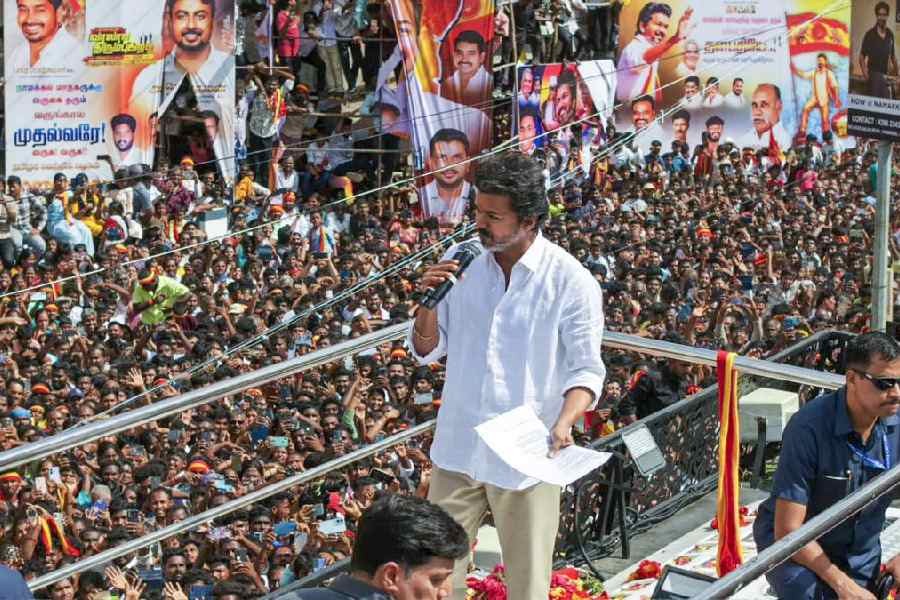
 JL Nehru Road: Jaywalking is too entrenched in Calcutta's traffic traditions for technology to act as a deterrent without the backing of strict enforcement and increased awareness, police have realised at the start of a trial run of boom barriers at the Exide crossing.
JL Nehru Road: Jaywalking is too entrenched in Calcutta's traffic traditions for technology to act as a deterrent without the backing of strict enforcement and increased awareness, police have realised at the start of a trial run of boom barriers at the Exide crossing.
In a city where pedestrian deaths constitute more than half of the fatalities in road accidents every year, boom barriers at intersections are expected to replace the ropes that cops use at the busier crossings to keep pedestrians from sprinting through traffic.
Based on the evidence of how almost every other pedestrian at the Exide crossing on Tuesday ignored the boom barriers, the police have decided to increase deployment of officers as well as civic volunteers to increase compliance.
The boom barriers have been synchronised with traffic signals so that the arms lift and close for pedestrians depending on whether vehicles have stopped or started moving. The Exide crossing will get six more barriers to cover the remaining pedestrian points.
Metro returned to the crossing on Wednesday to find a procession of pedestrians - men, women and schoolchildren - ducking under the boom barriers to either cross the road when the signal was green for vehicles or to board a bus that had stopped where they are not supposed to do so.
Most people appeared not to have the patience to wait for the few seconds that a boom barrier needs for the arm to lift once the signal has changed. The sensor-controlled arm of a boom barrier also does not fall back till the space under it is clear. Some pedestrians were spotted standing right below the raised arm, causing temporary dysfunction.
Sources in Lalbazar, the city police headquarters, said the sensors might be switched off to prevent this. Since the arm falls slowly, there is little chance of anyone underneath it getting injured, they clarified.
"Once all the boom barriers are installed, there will be deployment at the crossings to ensure that people cross only through the gates and that too when they are open," said an officer in the traffic department.

According to another officer, the brief for personnel deployed at intersections would be to prevent people from ducking under the barriers or trying to skirt them and prosecuting bus drivers who stop wherever there are passengers.
Instances of pedestrians resisting any such initiative are legion. Earlier this week, a sergeant was allegedly scolded and threatened that he would be "exposed" for encroaching on a pedestrian's right to walk. This was after the sergeant had tried to stop the pedestrian from crossing Park Street with his earphones plugged in.
"The man argued that it was not written anywhere that someone could not cross a road while using earphones for a phone conversation. He said the sergeant had encroached on his freedom. He clicked the sergeant's picture and left with the threat to expose him on social media," said an officer who came to know about the incident.
The police are banking on the embarrassment that comes with being hauled up in public to hurt more than the token fine of Rs 10 for jaywalking. "I am sure the man who gave a lecture on freedom to the sergeant will now think twice before he crosses a road with earphones on. He might at least remember the curious looks he had got from all around him when that incident happened," the officer said.











